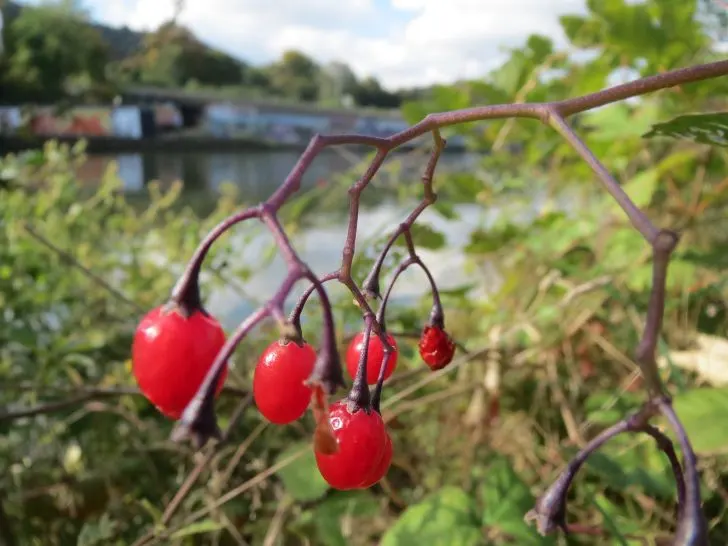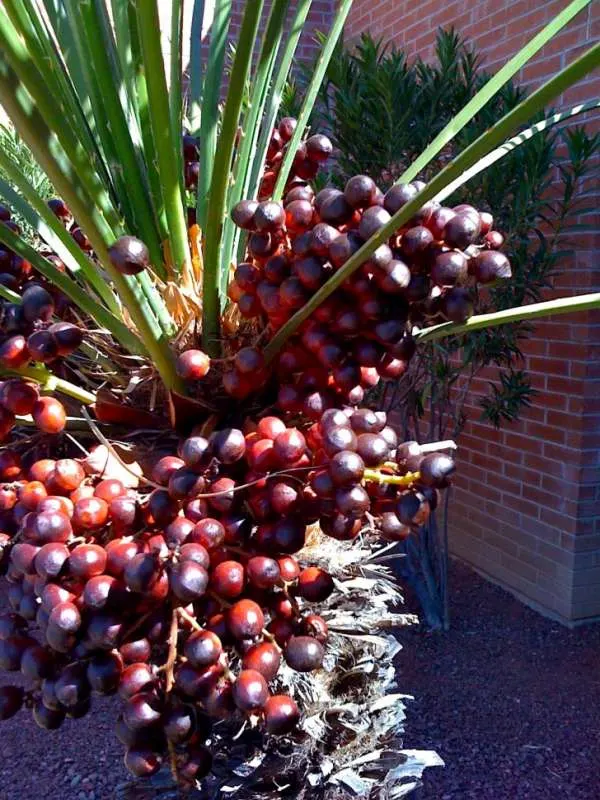As you wander and explore a lush forest, you may come across a vibrant bunch of snake berries looking captivating.
But as you reach out to pluck one, a nagging question arises: Are snake berries poisonous?
Snake berries encompass a wide range of species, including (but not limited) to various types of wild berries found in forests, meadows, and gardens. These berries often have distinctive characteristics, such as glossy or matte skin, vibrant red, blue, or black hues, and unique shapes resembling tiny gems.
Despite all the allure, the snake berries hold an inherent risk of being poisonous.
Are snake berries poisonous? Well…keep reading to find out.
Are Snake Berries Poisonous?
Yes, some snake berries can be poisonous if ingested.
While not all snake berries are toxic, certain species have harmful compounds that can be dangerous if consumed.
It is essential to exercise caution when consuming wild berries, as ingesting poisonous species can lead to various symptoms, from mild gastrointestinal discomfort to severe poisoning.
Proper knowledge and awareness of the different types of snake berries and their potential toxicity are crucial for ensuring personal safety when foraging through the wild.
Identification of Snake Berries!
When going out into the wild, you should know how to identify the berries correctly to avoid potential danger.
So, here is a breakdown of snake berries’ physical characteristics. This will provide critical visual cues for their recognition. Additionally, we will explore some common types of snake berries, offering examples that can assist in differentiating between various species.
Physical Characteristics of Snake Berries
Snake berries have distinct physical features that help in their identification.
By paying attention to these characteristics, you can make more informed decisions when encountering wild berries.
Some notable physical traits include:
- Berry Shape and Size: Snake berries can exhibit a range of shapes, such as round, oval, or elongated. Additionally, their sizes can vary from petite to more substantial, depending on the species.
- Skin Texture: Snake berries’ skin texture can provide valuable information. Some species have smooth and glossy skins, while others may have a slightly rough or textured surface. It is essential to observe any tiny bumps or hairs that may be present on the berries.
- Coloration: Snake berries showcase various captivating colors, often serving as distinguishing features. They can be vibrant shades of red, deep blue, purple, or black. It is worth noting that certain snake berries may even display a mix of colors or undergo color changes as they ripen.
- Stem and Leaves: Examining the stem and leaves attached to the berries can offer further clues for identification. Take note of the stem’s length and the characteristics of the leaves, such as whether they are simple or compound and have serrated or smooth edges.

Common Types of Snake Berries!
Here are some common types of snake berries:
- Solanum dulcamara, also known as Bittersweet Nightshade: This plant produces small, red berries that are toxic if eaten in large quantities. The name “snake berry” is sometimes used for this plant because of the berry’s supposed ability to treat snakebites, although this is not a medically accepted treatment.
- Actaea pachypoda, commonly known as White Baneberry or Doll’s Eyes: This plant produces white berries with a black dot resembling a doll’s eyes. These berries are highly toxic and should not be consumed.
- Chamaerops humilis, also known as the European fan palm or Mediterranean dwarf palm: This plant produces small, berry-like fruits, sometimes referred to as snake berries.

Poisonous Snake Berries!
While some snake berries are safe and even nutritious, it is vital to be aware of the existence of poisonous varieties.
You must familiarize yourself with these toxic berries’ potential risks and characteristics to ensure personal safety.
Symptoms and Risks Associated with Ingesting Poisonous Snake Berries
Ingesting poisonous snake berries can lead to various symptoms and health risks.
Symptoms may range from mild stomach discomfort, such as nausea, vomiting, or stomach pain, to more severe effects, including dizziness, headache, weakness, or organ damage.
The severity of symptoms depends on the specific toxicity of the berry species and the amount consumed. In some cases, ingesting certain poisonous snake berries can be fatal.
Be cautious and seek medical attention immediately if any adverse symptoms occur after consuming wild berries.
One example is the Baneberry, which comes in red or white varieties and is highly toxic if ingested. Other poisonous snake berries include the Doll’s Eyes (Actaea pachypoda), which have distinctive white berries with dark markings resembling eyes, and the Yew Berry (Taxus spp.), which grows on yew trees and is highly toxic.
Non-Poisonous Snake Berries
Non-poisonous snake berries are characterized by their edible and non-toxic nature.
These berries can be enjoyed fresh, used in culinary preparations, or processed into various products. Consulting reliable sources or field guides or seeking expert advice can help correctly identify non-toxic snake berries.
Some common non-poisonous snake berries include red currants, blackberries, elderberries, and raspberries. These berries have been consumed for centuries and have a proven safety track record.
Precautions and Safety Measures!
When it comes to consuming wild berries, exercising caution is of paramount importance.
To ensure safe berry identification and consumption, the following guidelines should be followed:
- Reliable Sources and Expert Advice: Consult reliable sources, such as field guides or reputable websites, to learn about different berry species and their characteristics.
- Accurate Identification: Properly identify the berries before consumption. Pay close attention to physical characteristics, including shape, color, texture, and growing habits. Cross-reference multiple reliable sources to confirm the identification of the berry.
- Avoid Unknown or Suspect Berries: If you are uncertain about the identity of a particular berry, it is best to err on the side of caution and avoid consuming it. It is not worth risking potential harm by consuming berries that cannot be confidently identified as safe.
- Moderation and Gradual Introduction: If consuming wild berries for the first time, start with small quantities to assess your body’s response. Some individuals may have sensitivities or digestive reactions to certain berries. Gradually introduce new berries into your diet to monitor any adverse effects.
That’s all for today.
Conclusion!
I hope this answers your question.
The important point is that not all snake berries are dangerous, but there are poisonous varieties. So, you must tread with caution.
Educate yourself about the species and consult an expert if you are a novice.
Even when identifying the berries yourself, you must be careful and follow all precautionary measures. When you find the right bunch of berries, it will be worth the trouble.
Stay safe, always!

